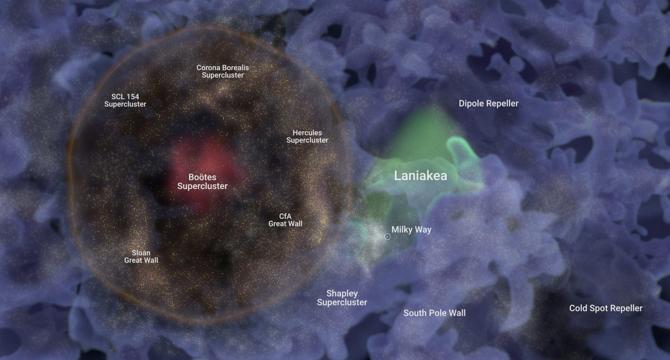Brighter Side of News
3d
245

Image Credit: Brighter Side of News
Gigantic ‘Bubble of Galaxies’ found stretching across billions of light years
- Scientists studying galaxy movements have discovered signs that our cosmic neighborhood may be part of a much larger system than previously believed.
- Analysis of over 56,000 galaxies by the Cosmicflows group revealed evidence of a galactic basin, Laniākea, possibly ten times larger than its known size.
- New data indicates a 60% chance that Laniākea extends towards the Shapley concentration, a region dense with mass and gravitational force.
- The discovery challenges current views on cosmic structures and suggests that the universe's architecture may need revision to show larger interconnected basins.
- The study implies that cosmic structures began growing more extensively than previously thought and questions the completeness of current cosmic surveys.
- Researcher Ehsan Kourkchi highlighted the challenges posed by the immense cosmic basins and the limitations of current survey tools.
- By analyzing the gravitational effects on galaxy movements, researchers can map the flow of galaxies within superclusters in the local universe.
- The ongoing research aims to understand the universe's interconnected cosmic system and our place within it, potentially linking our galaxy to grander structures.
- The study involves international astronomers like R. Brent Tully, Aurelien Valade, Noam Libeskind, and others, emphasizing the collaborative nature of astronomical research.
- The discovery challenges existing cosmic models, highlighting the vastness of the universe and continuing efforts to expand our knowledge of cosmic evolution.
Read Full Article
14 Likes
For uninterrupted reading, download the app